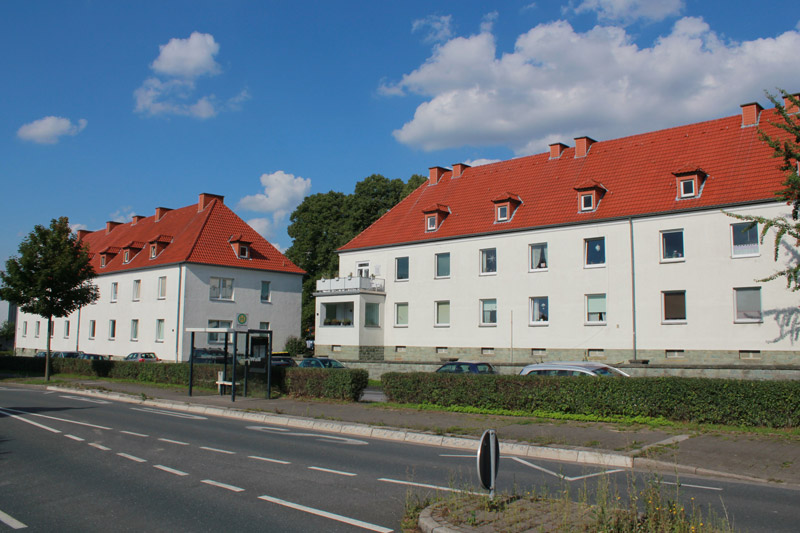The history of the former barracks site in the Iserlohner Straße is chequered. The barracks were constructed shortly before the start of World War II, and former Russian forced labourers were initially accommodated there in 1945 that were intended to return to their homeland. Hungarian war prisoners were then accommodated until the site was passed over to the Belgians by the British Army. The Belgian military took up residence in the barracks on 4 October 1946 and it was given the title of „Quartier Houthulst“ from this date onwards – named after a district in Flanders.
The period of Belgian occupation in Unna was not without problems: the soldiers wanted to fetch their families from Belgium and these needed living space. This was no easy situation in a region that had suffered much from bombing during the war and that consequently had a lack of housing. The „Transplant“ measure intended to resettle residents without permanent occupation and to use the apartments made free in this way for Belgian families – a process that caused much dissatisfaction and protest in Unna and that in the end was not put into practice. The conflicts remain though because accommodation space for the families moving to Unna was still needed. Several apartments were available at the barracks site but these were refused without reason, as was the accommodation space made available by the town. To alleviate the situation, further confiscations (including the spa building) and the construction of new officer flats were decided upon, but this required much time and also caused high costs.
Situations also recurred in subsequent years that burdened relations between the Belgians and the resident population – until official discharge of the Belgian troops in November 1955 and the final withdrawal of the last units in April 1956.

Today the buildings of the Hellweg Barracks serve as residential buildings.
Return to city map of historical locations
Return to list of historical locations